Last Updated on March 18, 2023
Sanding drywall mud is the solution for DIYers who want their drywall project to look professional. Doing so provides an impressive smooth finish and makes sure your job lasts. But when it’s time to sand, many homeowners wonder if they should sand between coats of drywall mud.
Yes, fine-grit sandpaper works great between coats of drywall mud to get an even coat and strong adhesion. But before you pick up the sander, some factors are worth considering.
Get all the information you need to give your drywalls that professional finish. Discover when, why and what kind of sandpaper is best for those tricky between-coat moments. Read on now and find out exactly how it’s done so you can improve your space.
How Do You Sand Between Coats of Drywall Mud?
Sanding between coats of drywall mud is necessary to ensure a smooth finish. Here’s how you should go about sanding drywall mud between coats to get that perfect finish every time:

Step 1. Prepare Yourself for Sanding
Before beginning the sanding process, it is essential to make sure that you are properly prepared. Put on safety goggles, dust masks, and some old clothes because there will be a lot of dust created during this process.
Make sure that you also have a vacuum handy so that you can easily collect dust particles as soon as they become airborne during sanding.
Step 2. Select the Right Sandpaper
Different types of sandpaper are available in the market, and it is essential to select the right one for this job. Generally, 150-180 grit sandpaper is considered the most suitable for drywall mud work.
Because it offers excellent abrasiveness, which helps remove small imperfections and provides a smooth finish after sanding.
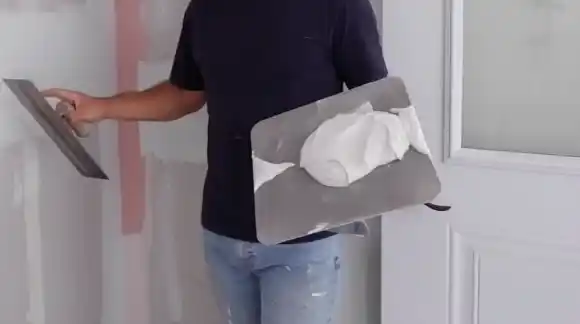
Step 3. Start Sanding at One End
Once you have selected the right sandpaper, start sanding at one end and work your way across until you reach the other end of the wall or surface.
As your hand sweeps around in circles, be vigilant for any irregularities. Gently push down to ensure the paper adheres, but don’t press too hard, or you may harm both wall and wallpaper!
Step 4. Vacuum Off Excess Dust
After finishing all four steps mentioned above, use a vacuum cleaner to remove all extra dust particles from your workspace.
Keep your workspace clean to help protect yourself from any dirt particles that could cause respiratory issues in the future. Taking preventive measures can make all the difference, so remember.
What Grit Sandpaper should I Use to Sand Drywall Mud Between Coats?
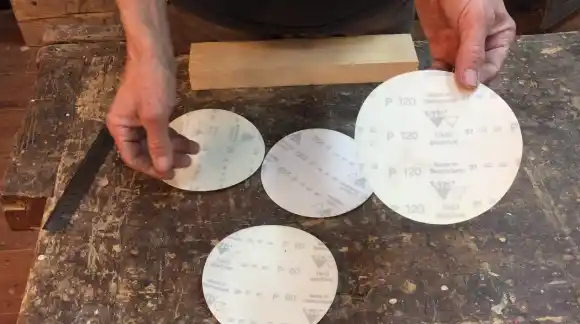
Generally speaking, 150-180 grit sandpaper is suitable for most applications when sanding drywall mud compounds between coats of paint. When sanding drywall mud, the ideal grit for sandpaper depends on several factors, including:
- The type of drywall used,
- The amount of coverage needed, and
- The desired surface finish.
With 150-180 grit sandpaper, you can quickly smooth away any rough patches on surfaces without damaging their integrity. It’s just the right amount of abrasiveness to get an excellent finish every time!
Additionally, this type of paper has enough flexibility to work around tight corners and edges without tearing or breaking apart due to its coarser texture. This makes it an excellent choice for projects that require precision and attention to detail.
When sanding 150-180 grit sandpaper for your drywall project, apply light pressure. It’s also essential to ensure that you move your hand steadily to not create rough patterns in the wall.
Working with this type of paper creates dust, so make sure your workspace is well-ventilated. Otherwise, the particles could build up and cause discomfort if they’re breathed in too much.
Why Should You Sand Drywall Mud Between Coats?
Sanding drywall mud between coats is important in ensuring your walls are smooth and free of bumps. By sanding the drywall excess mud after each coat, you can ensure that there will be less work needed during the final decoration stage.
It also helps to add structure and strength to the drywall surface, making it more durable. Also, sanding creates a uniform finish that allows you to apply primer or paint without visible flaws easily.
Sanding with fine-grit paper before painting is essential as it removes any remaining lumps or ridges from the wall’s surface, which could interfere with the overall appearance of your walls.
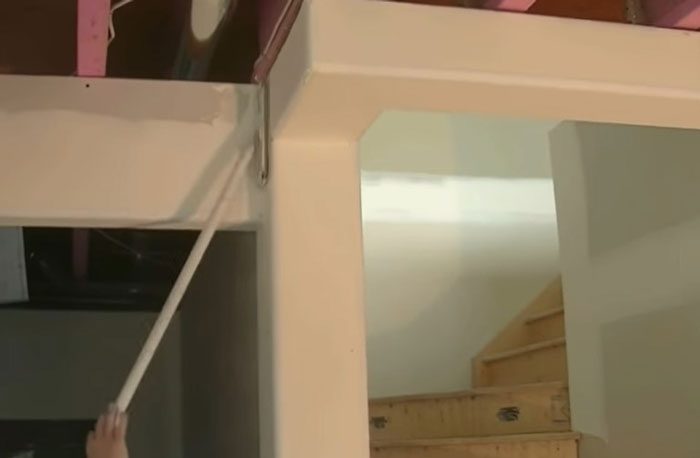
With every new layer of mud, you need to sand again to ensure that the previous layer has been completely evened out before adding another.
Another reason for sand drywall mud between coats is that it ensures an even absorption of primer or paint into the wall’s surface. This gives you a consistent finish when finally painting your walls and prevents any brush strokes or inconsistencies in color due to uneven absorption of primer or paint.
Also, sanding between coats eliminates air bubbles that are present underneath each layer of mud, so they don’t become visible when applying a coat of paint over them. It also removes small bits of debris, such as dirt and sawdust, which would otherwise get caught under each topcoat layer.
Should You Sand Thick Texture Drywall Mud Between Coats?
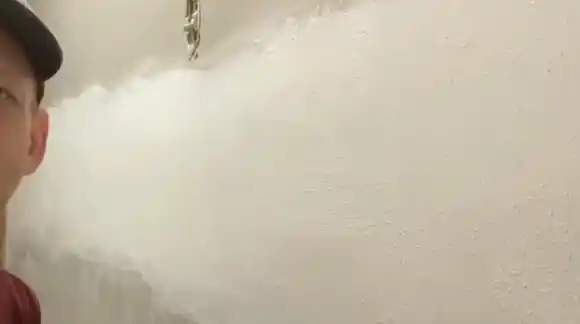
Sanding thick texture drywall mud between coats is an important step in a successful drywall job. Not only does it give the wall a smooth, professional finish, but it also helps to seal and protect the surface against any future damage.
Sanding between coats ensures that any bumps, air bubbles, or imperfections are eliminated, leaving you with a perfectly flat and even wall surface. Also, sanding helps blend the joint compound into one cohesive layer and create an even texture throughout the wall.
Using a thicker joint compound during this process will allow you to easily fill in all the small gaps and irregularities in the wall. This will make your result look more seamless and polished.
In short, sanding thick mud between coats is essential for achieving great results when completing a drywall project. It creates a strong bond between each layer of mud which helps to keep it from cracking or peeling away over time.
Furthermore, sanding eliminates unwanted bumps and imperfections while helping to blend the joint compound for a smoother finish overall.
Is it Better to Wet Sand or Dry Sand Drywall Mud Between Coats?
Wet and dry sanding are both useful techniques for smoothing out the surface of drywall mud between coats, but wet sanding is generally the preferred method. Wet sanding produces a finer finish with fewer scratches and divots, resulting in a smoother surface.
This can be especially important when painting or staining the drywall. Also, wet sanding reduces airborne dust particles, creating less mess for homeowners or contractors to clean up afterward.
When wet sanding drywall mud between coats, it is important to use a light touch and keep the paper constantly damp. This will help prevent gouging or damaging the wall’s surface. A spray bottle filled with water works well, but some people prefer a damp sponge.
Sandpaper should be changed often to avoid clogging with material from the drywall mud and ensure an even finish. When finished, rinse any remaining dust and residue with clean water before moving on to the next coat of paint or stain.
Alternatively, dry sanding can work just as effective if done correctly. The key is to use fine-grade paper, such as 150-grit or 180-grit, which will help minimize scratches on the wall’s surface. When using dry sandpaper, it is also essential to move quickly across the wall so as not to create too much friction that could damage it.
For most projects involving multiple coats of paint or stain on drywall mud surfaces, wet sanding is generally considered the better choice because it creates less dust while still providing excellent results in terms of smoothness and texture.
How Long to Wait to Sand Drywall Mud Between Coats?

When it comes to drywall mudding, one of the most critical steps is to wait 24 hours before sanding between coats. This allows the topping mud to set correctly and will give you a much better finish on your project. Sanding too soon can result in clumping, cracking, or other imperfections, so it is essential to follow this rule.
This drying process begins immediately after applying the compound and ends around the 24-hour mark. The speed of drying time usually depends on the temperature and humidity of the room, as well as how thickly the mud was applied.
If it was put on in an even layer, with no extra ridges or bumps, it should be ready in closer to 18-20 hours. But if it’s lumpy or unevenly applied, then it may take longer. Before beginning any work on your drywall project, ensure you have correctly prepared and sealed all areas where mudding will be done.
Should You Sand After Taping Drywall Mud Between Coats?
No, you should not sand after applying tape to drywall premixed mud between coats. Sanding the barrier tapes can damage them, leading to an uneven surface and potential weak spots in the joint.
Furthermore, it can cause tiny particles of dust that can get stuck in the next layer of plaster or paint, making a smooth finish impossible. Also, any sharp edges caused by sanding may tear or rip the paper surface applied over the drywall tape.
It is best practice to use drywall knives or trowels to bed tape into the joint compound and make sure they lay flat against the wallboard surface. Use medium pressure but avoid pushing too hard because this can distort the tape and subsequent spreading of the compound outside of joints.
A thin, even coat should be applied over the paper tape and then wiped off with a damp sponge before drying begins. This will ensure uniform depth throughout all joins and allow for a much smoother finish when painting or texturing is needed.
Should You Sand After a Second Coat of Drywall Mud?
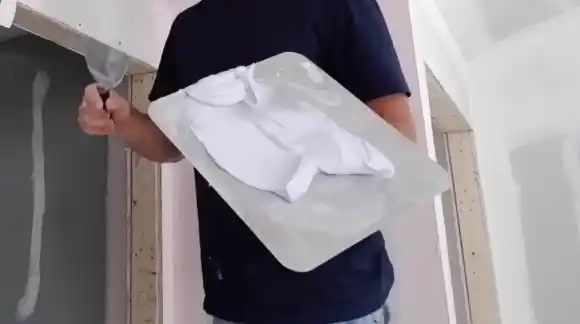
Yes, you should sand after the second coat of drywall compound mud. Sanding is an important step in the drywall installation process and helps ensure a high-quality finish. After applying a second coat of drywall mud, it is essential to sand to create a smooth surface.
This will make it easier to apply the next coat and give the wall a professional-looking finish when complete. Also, sanding after each coat of mud will help eliminate air pockets that can lead to cracks and voids in your walls.
Achieve a Flawless Finish: Sand Between Drywall Mud Coats
Sanding between coats of drywall mud is essential to achieving a smooth and even wall surface. Besides smoothing out imperfections, sanding also makes the surface more adhesive. This can prevent cracking and other damage down the road.
You’ll get a professional look by following the steps above and using the right tools and techniques. The process can take longer if you work with thick texture drywall mud or many layers.
Also, ensure that you always wait until each coat has had ample time to dry before sanding so that there is no damage to your walls. With enough patience and dedication, any homeowner should achieve a smooth and even surface when it comes time to paint their walls.



